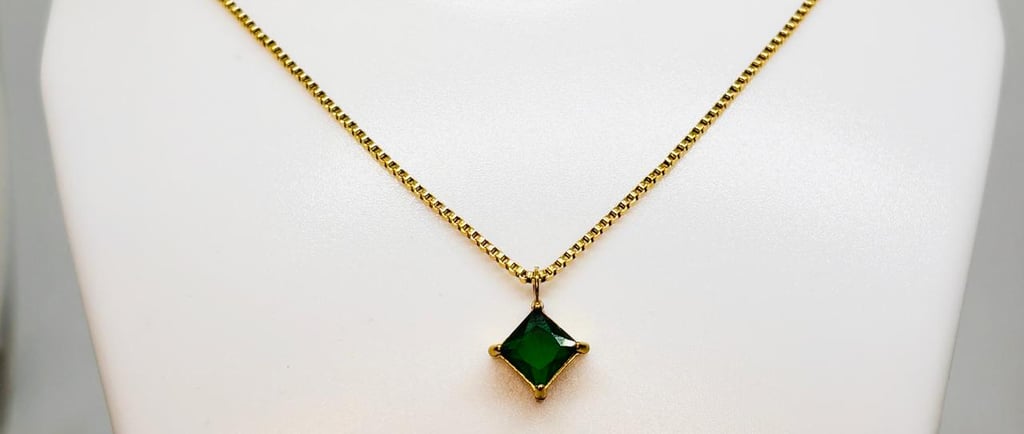The Science Behind Anti-Tarnish Stainless Steel Jewelry
Article by IRAZ
1/31/20252 min read


In the world of jewelry, maintaining the brilliance and luster of pieces over time is a significant concern. Tarnishing, which diminishes the aesthetic appeal of metals, is a common issue. However, stainless steel jewelry has gained popularity due to its remarkable resistance to tarnish. Let's delve into the science behind this fascinating property.
What is Tarnish?
Tarnish is a thin layer of corrosion that forms over metals as they undergo oxidation. This process is often accelerated by exposure to air, moisture, and certain chemicals. For example, silver tarnishes when it reacts with sulfur compounds in the air, forming a black layer of silver sulfide.
The Role of Chromium in Stainless Steel
Stainless steel is an alloy primarily composed of iron, carbon, and chromium. The key to its anti-tarnish properties lies in the chromium content, which must be at least 10.5% of the alloy. When chromium is exposed to oxygen, it forms a thin, invisible layer of chromium oxide on the surface of the steel. This layer acts as a protective barrier, preventing further oxidation and corrosion of the underlying metal.
Types of Stainless Steel Used in Jewelry
There are various types of stainless steel, but the most commonly used in jewelry are 304 and 316L stainless steel:
304 Stainless Steel: Also known as 18/8 stainless steel, it contains approximately 18% chromium and 8% nickel. It is versatile and widely used due to its excellent corrosion resistance and durability.
316L Stainless Steel: This type includes molybdenum, which enhances its resistance to corrosion, especially in saline environments. It is often used in high-quality jewelry and medical implants due to its hypoallergenic properties
Benefits of Stainless-Steel Jewelry
Corrosion Resistance: The chromium oxide layer protects the steel from rust and tarnish, making it ideal for daily wear, even in humid environments.
Durability: Stainless steel is highly durable and resistant to scratches, dents, and general wear and tear. This makes it a long-lasting option for jewelry.
Hypoallergenic: Stainless steel, particularly 316L, is hypoallergenic, making it suitable for people with sensitive skin.
Low Maintenance: Unlike other metals, stainless steel requires minimal maintenance to keep its shine and luster.
Care Tips for Stainless Steel Jewelry
While stainless steel is highly resistant to tarnish, proper care can ensure it remains in pristine condition:
Regular Cleaning: Clean your stainless-steel jewelry with mild soap and water. Use a soft cloth to dry and polish it.
Avoid Harsh Chemicals: Keep your jewelry away from harsh chemicals, such as bleach and chlorine, which can damage the protective chromium oxide layer.
Storage: Store your jewelry in a dry place, preferably in a jewelry box or pouch, to prevent scratches and exposure to moisture.
Conclusion
Stainless steel jewelry offers a perfect blend of beauty, durability, and low maintenance. Its anti-tarnish properties, thanks to the presence of chromium, make it an excellent choice for those looking for long-lasting and affordable jewelry options. By understanding the science behind stainless steel's resistance to tarnish, you can appreciate the craftsmanship and technology that goes into creating these stunning pieces.
